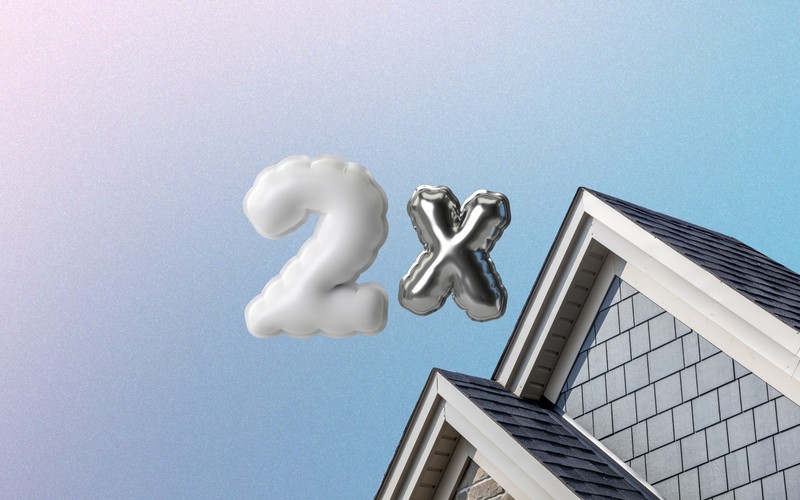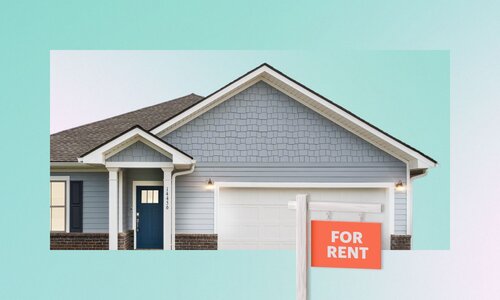Buying a second home can be a complicated process that will involve not just looking at the affordability of purchasing the home but also the costs associated with running it, the additional property taxes you’ll be responsible for, and the maintenance and repairs you may have to undertake, based on how you’re using the property. Here’s what to consider beforehand and how to buy a second home when you’re ready.
Reasons to buy a second home
There are several reasons you may choose to buy a second home. However, it’s important to know those reasons before you dive into the purchase because it will dictate the kind of home you purchase, how you finance it, and the taxes and costs associated with the property.
Here are some common reasons you may choose to buy a second home:
- Vacation home: You may purchase a property as a holiday home that serves as a getaway for your family or a place you may choose to retire to.
- Secondary residence: Another reason you may consider a second home purchase is if you or your partner live far enough from your place of work that a drive or train journey isn’t tenable daily. A secondary residence or commuter home can be an excellent option in situations like this.
- Real estate investment: As a real estate investor, you can buy a home to flip, turn it into a single family rental, or list it on Airbnb or other websites as a vacation rental.
- Upgrade to a new house: A common reason someone may purchase a second home is to move into that house. In such a circumstance, your first home could be turned into an investment property you can rent.
- For family: If you’re helping support a college student, an aging parent, or another family member, you may choose to purchase a home for them to use.
Are you ready to buy a second home?
There are several factors to consider when deciding to purchase a second home. These include:
Affordability
Whether you can afford the property will be the primary consideration when you buy a second home, but the home’s value is just the beginning of the conversation. Other financial aspects you’ll need to consider:
- How much do you have available for a down payment? Remember, for a second home, you’ll need a higher down payment than you did for your primary home.
- What are the current mortgage interest rates? And how will they impact this property’s long-term bottom-line cost and profitability?
- Have you calculated your debt-to-income ratio? Most lenders will need to see a DTI of 43% or less to approve a second home mortgage.
Occupancy
You may rent out your second home when you’re not using it. However, depending on how often you lease the property out, it may be considered an investment property by the IRS and taxed differently. The type of mortgage you get will also limit your rental and leasing rights, so it’s important to factor those aspects in before you put money down.
Maintenance
Suppose you are considering making your second home an investment property. In that case, you’ll need to look at the time and costs of marketing the property, finding renters, and general maintenance, including repairs and replacements. If you hire a property management company to take care of this, especially if your second home is in a different city or state, factor those costs in.
How to buy a second home
Here are the steps to follow when you’re ready to buy your second home.
Step 1: Determine the location and type of property
Once you’ve decided how to use the property, it’s time to scope out locations and start rating areas and neighborhoods based on your needs. It’s also worth considering whether you want your second home purchase near your home or are happy to be a long-distance landlord with a property management company doing the bulk of the work.
Step 2: Add up the costs of owning the property
Once you’ve looked at the location and type of property, you’ll need to budget the monthly expenses for the property and the tax implications. Run your numbers, especially if this is an investment property because you’ll want to ensure that you have regular cash flow that covers the cost of your mortgage and your operating expenses. Some of the expenses homebuyers need to consider include:
- Insurance: Homeowners insurance on a second property often costs more than insurance on a primary residence. Your insurance type, and therefore, rates, will also vary based on the purpose of the property.
- Utilities: Tenants may pay for utilities when the home is occupied, but during vacancies or if you’re using the home as a second residence or holiday home, you’ll need to cover those costs.
- Maintenance: Other than repairs and upgrades, there may also be regular maintenance costs, such as the cost of mowing the lawn or shoveling snow, especially if you live at a distance from the property. And, of course, don’t forget the cost of travel to and from the property.
Step 3: Decide how you’ll finance the home
Once you’ve calculated your numbers, figuring out how you’ll be financing the property is important. There are two primary costs you need to consider at this stage.
Down payment: Since your down payment may be higher on a second home than is typical for a primary residence, you’ll need to come up with the cash for the down payment and closing costs. A down payment on a second home typically starts at 10% of the purchase price, though it is recommended that you go higher since you will now be paying two mortgages. Suppose you don’t have enough cash saved up for the upfront costs. In that case, you might consider a cash-out refinance, which involves refinancing your current home for a larger amount and using the money from the original mortgage as a down payment. Some people will also take out a HELOC or home equity line of credit, which allows you to take 85% or more of the equity you have in your home as cash for a down payment.
Mortgage loan: When purchasing a second home, getting pre-approved for a mortgage is a good idea. This will give you a better idea of how much you can finance, the interest rates you qualify for, and what works out regarding monthly mortgage payments. Before applying for pre-approval, review your credit score, assets, income, and debt-to-income ratio since these are the things mortgage lenders will look at when evaluating potential borrowers.
Step 4: Find a home and make an offer
Once you know how much house you can afford, the fun part of shopping for a home begins. Work with a local real estate agent in the area because they’ll often have the networks and knowledge to find the best deals and hidden gems. You can make an offer once you’ve found a property you like. Once your offer is accepted, you’ll start closing on the home, which takes 30-40 days on average. You’ll need to buy homeowner’s insurance, wait for a home appraisal to be carried out by your lender, and hire someone to do a home inspection. Once all that’s done, you’ll be ready to sign the papers and get the keys to your new home.
If you’d like to get on the property ladder and invest in a second, third, fourth, or even fifth home but want to avoid the headaches of saving a down payment or becoming a long-distance landlord, consider Arrived. Our platform allows real estate investors to purchase shares in profitable rental properties and start building a portfolio today.
The opinions expressed in this article are for general informational purposes only and are not intended to provide specific advice or recommendations for any individual or on any specific security or investment product. The views reflected in the commentary are subject to change at any time without notice. View Arrived’s disclaimers.







